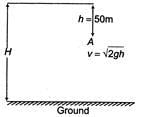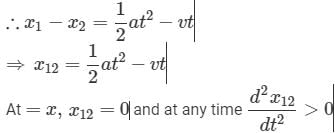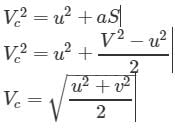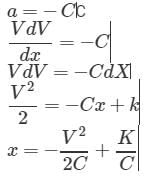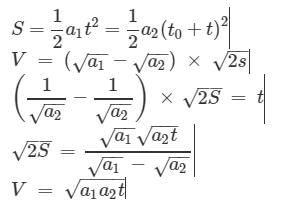Test: Acceleration- 2 - EmSAT Achieve MCQ
10 Questions MCQ Test Physics for EmSAT Achieve - Test: Acceleration- 2
The relation between time t and distancexis t = ax2 + bx,where a and b are constants. The acceleration is
A car, starting from rest, accelerates at the rate f through a distance S, then continues at constant speed for time t and then decelerates at the rate f/2 to come to rest. If the total distance travelled is 15 S, then
A parachutist after bailing out falls 50 m without friction. When parachute opens, it decelerates at 2m/s2. He peaches the ground with a speed of 3 m/s. At what height, did he bail out?
A body is at rest at x = 0. At t = 0, it starts moving in the positive x-direction with a constant acceleration. At the same instant another body passes through x = 0 moving in the positive x direction with a constant speed. The position of the first body is given by x1(t) after time t and that of the second body by x2(t) after the same time interval. Which of the following graphs correctly describes (x1 − x2) as a function of time t?
An object, moving with a speed of 6.25m/s, is decelerated at a rate given by  where v is the instantaneous speed. The time taken by the object, to come to rest, would be
where v is the instantaneous speed. The time taken by the object, to come to rest, would be
The distance travelled by a body moving along a line in time / is proportional to t3.
The acceleration-time (a, t) graph for the motion of the body will be
A goods train accelerating uniformly on a straight railway track, approaches an electric pole standing on the side of track. Its engine passes the pole with velocity u and the guard's room passes with velocity v. The middle wagon of the train passes the pole with a velocity.
Which graph corresponds to an object moving with a constant negative acceleration and a positive velocity?
A car is standing 200 m behind a bus, which is also at rest. The two start moving at the same instant but with different forward accelerations. The bus has acceleration 2m/s2 and the car has acceleration 4m/s2. The car will catch up with the bus after at time of -
In a car race on straight road, car A takes a time t less than car B at the finish and passes finishing point with a speed v more than that of car B. Both the cars start, from rest and travel with constant acceleration a1 and a2 respectively. Then v is equal to:
|
209 videos|261 docs|191 tests
|



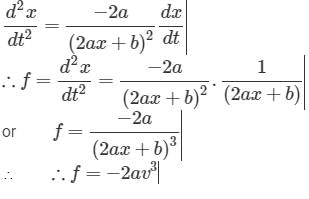
 and slope of
and slope of 
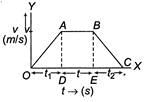



 givesdistances,
givesdistances,  (say) ...(i)
(say) ...(i)




 ...(ii)
...(ii)







 (given)
(given) (given)
(given)